Questioni caught an anole in the bakeyard nd my dad said i ccould keep it if i know wat it needs to live so now i have in a fish bowl is that okay?nd i really wanna keep it so plzzzzz tell me wat fruits it eats nd wat i need to do for it to live
AnswerHi, Alize,
Unfortunately, the old saying, "there's no such thing as a free puppy" applies here. There is no such thing as a free pet lizard.
In order to survive in captivity, reptiles have special requirements beyond what a hamster or parakeet would have. Keeping them is, in many ways, like keeping tropical fish. Just as a fish bowl will not keep a gold fish alive (that's why fish kept in bowls always die), it won't keep an anole alive, either.
Anoles require a minimum of a 10 gallon tank, with a screen top. Larger would be better. One of the ZooMed or ExoTerra vivariums, 12 X 18 tall, would work well for a single anole, and the front-opening style would make caring for the lizard easier.
Anoles require UVB light. Because these lizards are awake during the day, they get a lot of natural sunlight, in the wild. Their bodies use sunlight to make vitamin D (just as ours do). They do not use vitamin D supplements very well, so this light is necessary to keep them healthy. Pet stores sell UVB lights, which will be fluorescent or mercury-vapor. (The mercury vapor lights are only suitable for very large enclosures, as they get very hot).
Anoles require specific temperatures. While reptiles are said to be 'cold blooded', they actually are not. They have a range of temperatures that they can function in, and anoles hibernate over the winter to avoid cold. In order to remain active, and digest their food, it must be 80F during the day for them, and they need a 90F basking spot where they can warm up further. Temperatures below this will make them incapable of digesting food and they will become ill. Temperatures too high will kill them. As a result, use a digital thermometer with a remote probe to record accurate temperatures. (The stick-on dials do not work). You can pick up inexpensive indoor/outdoor thermometers with remote probes from walmart.
Heat can be provided with a low-wattage heat lamp. Change the wattage of the bulb, or raise or lower it over the enclosure, to get the correct basking temperature. Never place one inside the cage, as the animal will burn itself.
Anoles need a humidity around 80%. If the humidity is too low, they will dehydrate, and also have problems shedding their skin. They will only drink water from droplets, not from a dish, so provide water a couple of times per day by misting with a spray bottle.
Anoles are insectivores. This means they eat mainly live insects. 1/4" crickets from a pet store are the best choice. They must be fed a good diet (called gut-loading) for a day before you give them to the lizard, and should be dusted with calcium powder containing vitamin D3. Feed every other day, and once a week, use a vitamin supplement powder instead. It should contain some pre-formed vitamin A.
Anoles may also enjoy SMALL amounts of fruit baby food (once or twice a week), or better yet, Repashy crested gecko diet (a powder that is served mixed with water).
Anoles are very sensitive to stress, and should not be handled, particularly when they are first caught or brought home. They may require several months to get used to a new home. Their home should be decorated with lots of live or fake plants, and climbing branches, to make them feel secure.
Finally, a wild-caught anole will carry internal parasites, and must be seen by a veterinarian. A fresh (not dried out) fecal sample should be taken to the vet, and tested to see what types of parasites are present, and then the anole will need to be treated to get rid of them. The reason for this is that when an anole is in captivity, it will be reinfected with eggs from the parasites it carries, so they will build up in its body until they kill it.
Anoles may live anywhere from 5 to 9 years with proper care, but rarely make it to even 1 year without proper care. If you are unable to provide all of these things for your anole (because they do cost money--probably over $100 just for the basic gear), then you should let the anole go, immediately. An anole kept in a fish bowl would die a miserable death, and you don't want to be cruel to an animal. Let him go, and be happy knowing that the anole will be happy.
If it's not possible to keep it now, then you should consider saving up to get the right equipment, and later on, getting a captive-bred leopard gecko, which would be the best first pet reptile to start with. Always remember to read up carefully on any pet before you buy it. There are many good books on leopard gecko care available. An anole is not the best first pet reptile, because wild-caught animals are wild, and difficult to get used to living in captivity. Almost all anoles available are wild-caught. Leopard geckos that have been raised from the egg in captivity make much better pets, and can be handled. Never take advice from pet store personnel, and always read a book and have ALL of the equipment ready, before you bring home any reptile.

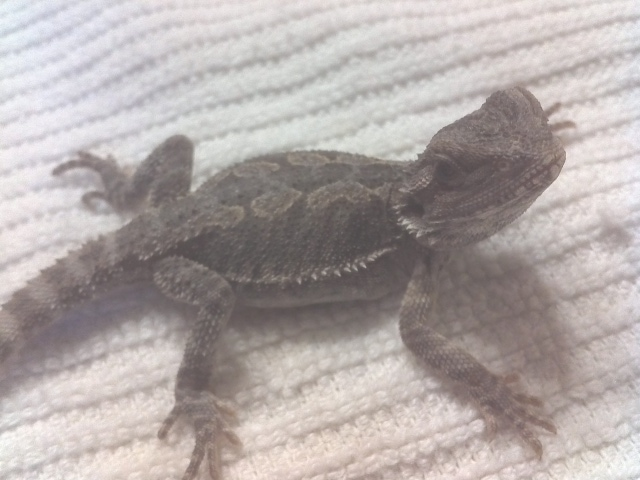 female bearded dragon attacked male bearded dragon
QuestionQUESTION: So I was cleaning the bearded dragons
female bearded dragon attacked male bearded dragon
QuestionQUESTION: So I was cleaning the bearded dragons
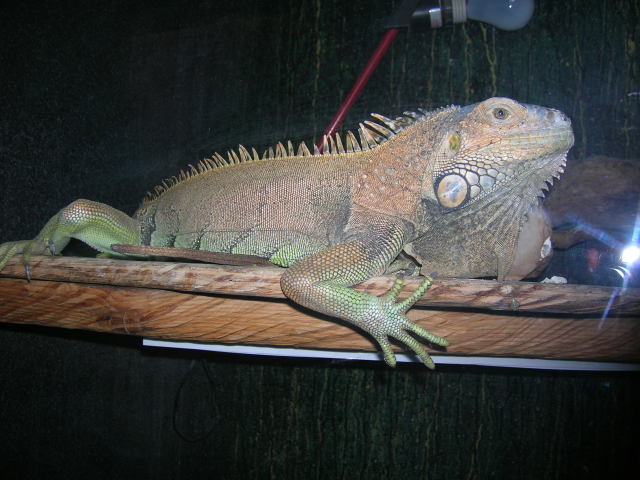 Green Iguanas Longevity
Question
Ralph
I have had my green iguana for almost 15
Green Iguanas Longevity
Question
Ralph
I have had my green iguana for almost 15
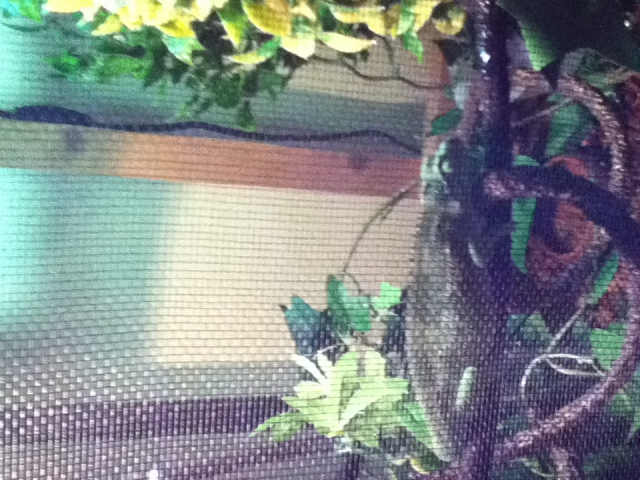 Could it be my UVB bulb?
QuestionQUESTION: Hi. I have a 13 month old Yellow Cres
Could it be my UVB bulb?
QuestionQUESTION: Hi. I have a 13 month old Yellow Cres
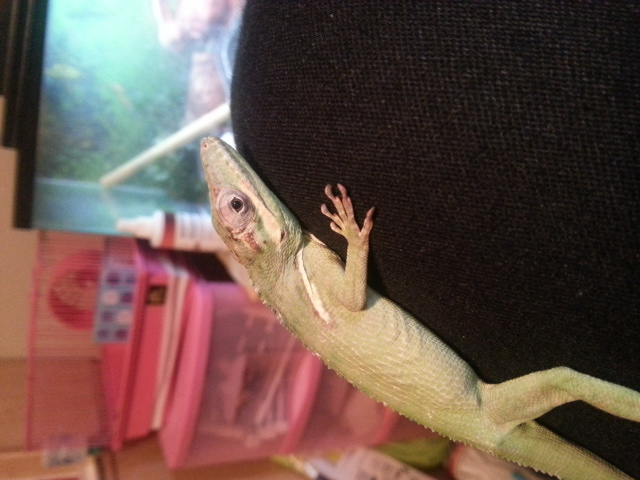 Cuban Knight Anole
Question
Grimm
Hello! I have a four month old Kn
Cuban Knight Anole
Question
Grimm
Hello! I have a four month old Kn
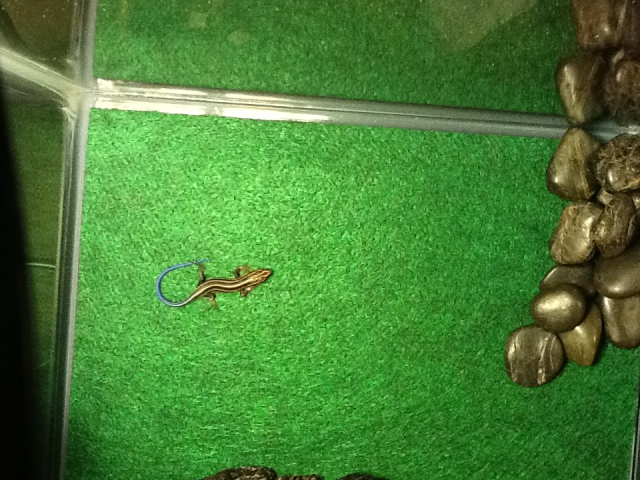 Five lined skink
QuestionQUESTION: Hi, I live in myrtle beach sc a
Five lined skink
QuestionQUESTION: Hi, I live in myrtle beach sc a